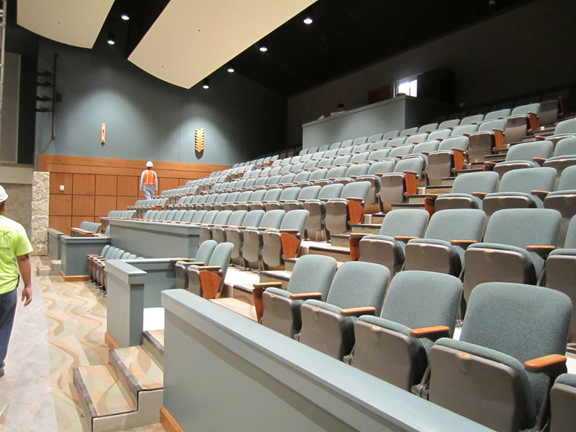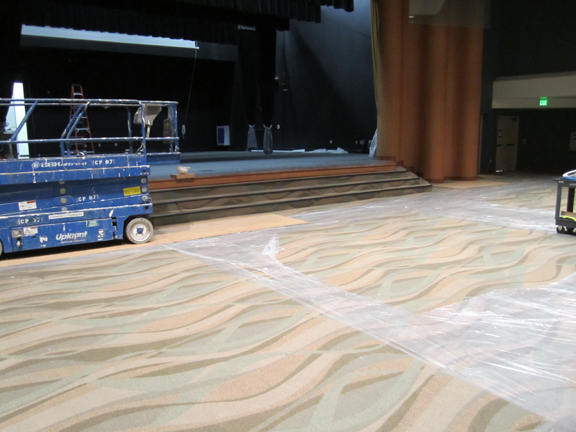It seems like dynamic pricing may start to creep into the non-profit performing arts sector as a common practice. Stories about it are starting to crop up more and more frequently. When the topic of changing prices based on market demand comes up, people often use the phrase “like the airlines do.”
So should I be surprised when today I saw a story about how Opera Australia got advice about dynamic pricing from the airline Qantas?
In the beginning of July, there was a story about dynamic pricing in the Los Angeles Times. Chad Bauman at the blog Arts Marketing did a good job addressing the recent move toward dynamic pricing in a post earlier this month.
Of course, who knows. Maybe dynamic pricing is just a hot story because newspapers see others during stories on dynamic pricing. Still, it is a conversation non profit organizations need to be having, if only to decide it isn’t for them.
I actually started a discussion on the Performing Arts Administrators’ group on LinkedIn back in May. I had some concerns about the approach to pricing suggested by a guy I was partnering with on a show. It ended up that I misunderstood what he was proposing.
There were only a few responses and the conversation appeared to have run its course when I went away on vacation at the beginning of June, but when I returned I found a slew of new responses. I think it reflects some of the concerns and thoughts people have about the practice.
One of the first responders, Mark Wladika, said the practice of variable pricing left him feeling manipulated, though allowed if people were aware from the outset that “hot shows will see an increase,” it might represent a middle ground. Another commenter, Omar Miller, noted that if the maximum variation was only going to be $5-$10, the potential revenue gains may not be worth the loss of good will if audiences felt manipulated. A concern for the good will of the community was echoed by a number of commenters.
As the conversation went on, the need to communicate the policy clearly seemed crucial as well as limiting it to single ticket purchasers and exempting subscribers. It was noted that lowering ticket prices at the last minute has the potential to alienate those who bought earlier at a higher price and end up reinforcing a procrastinating behavior.
Joanne Bernstein, a Chicago based arts consultant, advised that the decision to change a price be based on a rise in demand rather than proximity to a performance date. She argues that people are busy and should not be penalized for not being certain about their plans just because it happens to be less than 24 hours before a performance.
Maggie Christ brought up the legal issues surrounding variable pricing citing NYC laws that require if a range of prices is implied, the maximum price as well as the minimum price is required. For example, you can’t say tickets starting at $15 without noting that the top price is $500. Which, of course, gives a pretty good indication about the cost of most of the tickets and the probable location of those $15 seats.
Toronto based arts consultant, Linda Rogers, pointed out that some arts organizations are limited by the capacity of their ticketing systems. Airlines and many Broadway houses using services like Ticketmaster and Telecharge have a greater ability to alter their ticket structure in response to demand than most arts organizations. I have to agree there because the process we have to follow to charge a higher price on the day of the show is pretty clunky.
One comment I particularly liked came from Kara Larson, an arts consultant from Portland, ME.
“Two important points: 1) People value what we do differently. Correctly differentiating initial prices and dynamically raising them in response to demand allows people to decide for themselves what seats, timing, and price is right for them. The ones who want to wait for a sure-fire hit will often happily pay for the privilege. 2) Being responsible stewards of the organizations people charitably support means making the most of opportunities to earn revenue given our programming. Passing up opportunities to make revenue means asking for more donated support. And vice versa.”
In a later comment she made a pretty thought provoking suggestion about a different way to approach dynamic pricing:
“The base interest is understanding demand in our markets well enough to price ALL our tickets optimally. Building a rational projection model and adjusting it when we discover errors should be our first and most important task regarding pricing. Only when we err (significantly, in my opinion) do we need to correct by pricing dynamically. Dynamic pricing is an admission that we got the prices wrong in the first place, so badly that it’s worth it to the bottom line to invest in a new system for correcting them.
At the last arts center where I implemented dynamic pricing, the revenue increase was significant in the first season and less in the second. To me this was good news, because we had taken what we learned in year one and applied it to the base ticket pricing, so had less correcting to do at the last minute. Remember, whenever you price upward dynamically, you’ve already sold some (and often most) of your tickets at the wrong price.
I suggest that instead of spending what seems, industry-wide, to be an increasing amount of time debating the merits of dynamic pricing we all spend some time collectively developing much better predictive models for pricing in the first place.”
Some members of the group are moving forward with using dynamic pricing. Steve Carignan, Executive Director of the Gallagher Bluedorn at the University of Northern Iowa says he is moving forward with dynamic pricing this season. He asks,
“Performing arts has for a long time been linked to a discount mentality (devaluing our product and trying to cut our way to a smaller loss). Is it our customers who are uncomfortable or us?”
Liz Olson of the NYU Skirball Center for the Performing Arts made a comment that gave me cause for concern.
“…I don’t think that foundations or donors will look at variable ticket pricing fondly. They like when we are able to show self-sustainability but from what I have seen donors tend to punish non-profits they deem as operating “too much like a for profit.” (as seen in the endless debate about overhead costs and executive pay at nonprofits.)”
Does anyone have any insight into the validity of this? Have any foundations made comments of this general sort? Another commenter said she didn’t feel this was the view foundations and donors viewed attempts at dynamic pricing. However, neither offered much in the way of explicit evidence for either view. I hate to say that from what I have read, either could be the dominant perception at this time. Or perhaps the practice isn’t wide spread enough that foundations have developed a clear policy and approach.







I've been to a few of the Science on Tap events, though I never gave a talk at one of…